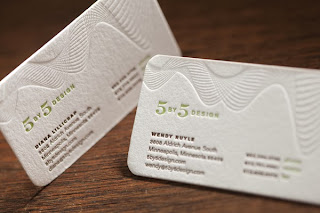BAUHAUS
The Bauhaus (1919 - 1933) was founded in the city of Weimar by German architect Walter Gropius (1883 0 1969). It's objective was a radial concept: To reimagine the material world t reflect the unity of all arts. This vision for a union of art and design in the proclamation of the Bauhaus, which described a utopian craft guide combining architecture, sculpture, and painting into a single creative expression. The Bauhaus combined elements of both fine arts and design education. - netmuseum.org
BAUHAUS TYPOGRAPHY WORK AND TYPE STYLE
With the appointment of Moholy - Nagy in 1923, new ideas about the use of typography came to the Bauhaus. Nagy considered typography to be primarily a communications medium, and was concerned with the 'Clarity of the message in its most emphatic form'. The combination of text and photography into the interrelated compositions of pure communication he named 'Typefoto'. - designhistory.org
Bauhaus font was originally created by Herbert Bayer of the Dessau Bauhaus in 1925. Each letter has a simple geometric form, producing clean lines and clear individual letters. The font symbolises the nature of the design carried out in the Bauhaus design school. It is uncomplicated, clear and easy to use, yet it has a classic designer form, distinctive of Bauhaus designers and architects. - technologystudent.com
mtvenar.deviantart.com
This grid has used diagonal, parallel lines that run from the top right hand side to the left, however it looks funky because they have not been created from the corners. The diagonal, parallel grid lines running from the top left corner to the bottom create even strips for the text to sit on. The block colours of red and black are equally positioned on the grid, even though they are different sizes, they still look natural. The smaller point sizes still function with the guide lines for the bolder, larger text.
bauhausgraphics.wordpress.com
On this piece, there are larger amounts of negative space, making the type stand out more. The grid lines are all well balanced, from both left to right and right to left, going diagonally. The block colour of the red and black and the text, work well as the left to right diagonal grid lines make the text in line with each other, making it easy to read and effective.
On this piece, there are larger amounts of negative space, making the type stand out more. The grid lines are all well balanced, from both left to right and right to left, going diagonally. The block colour of the red and black and the text, work well as the left to right diagonal grid lines make the text in line with each other, making it easy to read and effective.
hunter1acosta.wordpress.com
The grid lines for this work is more complex, which is why i love this design. Th white images and heading make the coloured text stand out against the black background. Grid lines have been used when placing the centre image, which is in line with the diagonal text. The heading has used grid lines when placing the individual characters in front of the text.
The grid lines for this work is more complex, which is why i love this design. Th white images and heading make the coloured text stand out against the black background. Grid lines have been used when placing the centre image, which is in line with the diagonal text. The heading has used grid lines when placing the individual characters in front of the text.
designhistory.com - Title page of 'Staatich es Bauhaus Weimer 1919 - 1923'. 1923 - letterpress print.
This design has used a simple grid method, keeping all the information in easy to read, perfect form. By using lines going from both left to right, and up and down, the design looks very structured. Although the B is used in a larger point size, it is still following the guidelines, just like the smallest point size at the bottom. The two headings at the top of the page are not quite following the same grid lines, however the bottom characters are placed in the middle of two letters from the top text. Both of the S's at the end of the headings do not follow these grid lines as they line up together, therefore they are using a different grid line.
THE GRID SYSTEM
A grid is a structure made up of a series of intersecting, straight or curved lines to structure content. The grid serves as an armature on which graphic designers can organise graphic elements (images, glyphs, paragraphs) in a rational, easy to absorb manner. - wikipedia.org
typophile.com
w.-jeffery1215-dc.blogspot.com
The New Wave Of Swiss Design
The main man was Wolfgang Weingart(1941-swiss punk) It is based on an intimate understanding of the semantic, syntactic and pragmatic functions of typography. (designhistory.org)
April Grieman
Grieman was a designer based in New York City in the mid 1970's. (aiga.com)
Dan Friedman
born in 1945 to 995, Friedman invented the term radical modernism. Attempting to recognise the social idealism of the early 20th modernists with the realities of his life in 1980's New York City. (designhistory.org). Both of these artists were inspired by Weingart.


























































